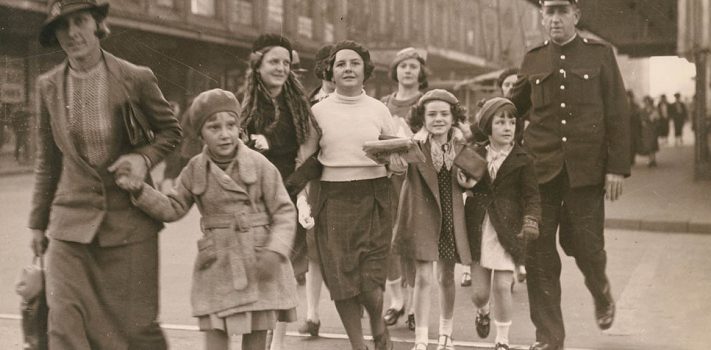Email a copy of 'How to Teach Situational Awareness to Children - Part 3, by T.Y.' to a friend
5 Comments
- Ad Ready Made Resources Anytone Termn-8RCall us if you have Questions 800-627-3809
- Ad Ready Made Resources, Trekker Water Filtration SystemUsed throughout the World


That holds true for child abuse, the guilty persons are most likely family members, often the true guilty persons aren´t the ones who did the deed(they were abused themselves as children) but those family members who played three apes, because they cared more for their face and pride than for the little children.
And No, that isn´t something new
ThoDan, you are so right. True for me, anyway. Also, for the few people I know who have admitted to being abused.
Carry on in grace
My eldest son is already excellent at the “camouflage” game. He developed a knack for being nearly invisible in a room at a young age and I have encouraged him to continue developing that skill. When it comes to teaching situational awareness, how to respond in emergency situations, etc., I take the approach of Deuteronomy 6:7-9 to teach my children in the moment when something comes up. Lessons seem to be learned more thoroughly and retained better when taught in this manner. Information if communicated without having to be forced. If the opportunity arises, use everyday situations to connect scripture and to apply lessons to survival scenarios.
Greetings T.Y.–You are a “Methodical Thinker”–I wish you had written the assembly manual on my kit greenhouse. As addressed in your article, my kids, and grand kids learned fire extinguisher use between the ages of 8 and 11. Their training was scary for them at first, eventually evolving into multiple layer burn setups with a couple of small pans of diesel fuel,(all done with safety built in). They got past their fear, and learned to work the fire from the base up. ( note to granddads; this training goes a lot smoother with their mom not around). The other part of their fire training involved walking the property to identify shutoffs, Gas valves on appliances, main gas meter, water line appliance valves-washer-water heater, water meter, electrical house breakers, out building breakers, main breaker. As per your article, they were taught to identify the problem. A lot of things can cause a gas line fire, ( earthquakes, car crashes etc) The one thing you do NOT want to do in your excitement is to extinguish a gas fire, only to realize seconds later that you now have gas blowing in an area with probably a few still burning or smoldering hot spots.–hopefully the first little voice in your head has already told your legs to “RUN–RUN”,–before the second little voice says find and shut off the valve. They also learned the different nature of natural gas as opposed to propane. Natural gas floats up, and propane lays on the ground. Natural gas can potentially load toward the top of a room, or attic, as opposed to propane drifting into crawlspaces and basements. Moral to the story, or training, Identify the problem, shut of the fuel or power supply, extinguish the fire, and ventilate the area.—Now I feel a little odd writing this as I believe that the majority of the readers on this site have probably known these principals for most of their lives. These comments are only to help those who may not posses those skills–Explanation, Recently we had a small earthquake in our area. Many co-workers were E-mailing that they would be a little late for work until they checked their property. The forman just mentioned in his E-mail that now is a good time to re-familiarize ourselves with their gas and water shutoff valves. One employee frantically responded a few minutes later ” MY WATER VALVE WON’T LET ME SHUT THE WATER OFF, IT ONLY ALLOWS ME TO ADJUST THE TEMPERATURE!!!
This is an excellent book to teach young children what is and what is not appropriate touching.
God Made All of Me: A Book to Help Children Protect Their Bodies
https://www.amazon.com/God-Made-All-Me-Children/dp/1942572301/ref=sr_1_3?crid=2QJ1GMX9A5HN8&dchild=1&keywords=god+made+all+of+me&qid=1594334056&sprefix=God+mad%2Caps%2C385&sr=8-3